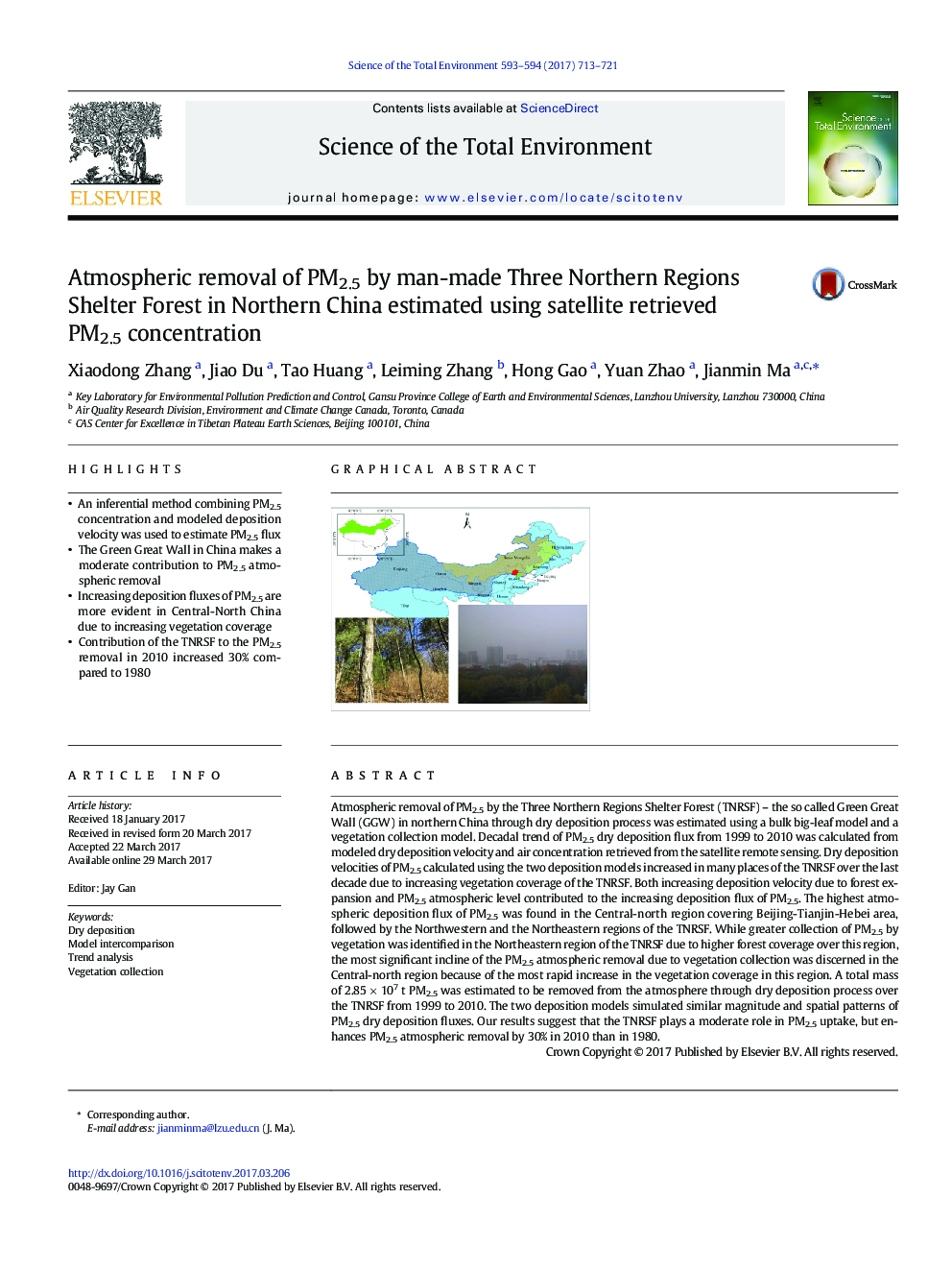| Article ID | Journal | Published Year | Pages | File Type |
|---|---|---|---|---|
| 5750900 | Science of The Total Environment | 2017 | 9 Pages |
â¢An inferential method combining PM2.5 concentration and modeled deposition velocity was used to estimate PM2.5 fluxâ¢The Green Great Wall in China makes a moderate contribution to PM2.5 atmospheric removalâ¢Increasing deposition fluxes of PM2.5 are more evident in Central-North China due to increasing vegetation coverageâ¢Contribution of the TNRSF to the PM2.5 removal in 2010 increased 30% compared to 1980
Atmospheric removal of PM2.5 by the Three Northern Regions Shelter Forest (TNRSF) - the so called Green Great Wall (GGW) in northern China through dry deposition process was estimated using a bulk big-leaf model and a vegetation collection model. Decadal trend of PM2.5 dry deposition flux from 1999 to 2010 was calculated from modeled dry deposition velocity and air concentration retrieved from the satellite remote sensing. Dry deposition velocities of PM2.5 calculated using the two deposition models increased in many places of the TNRSF over the last decade due to increasing vegetation coverage of the TNRSF. Both increasing deposition velocity due to forest expansion and PM2.5 atmospheric level contributed to the increasing deposition flux of PM2.5. The highest atmospheric deposition flux of PM2.5 was found in the Central-north region covering Beijing-Tianjin-Hebei area, followed by the Northwestern and the Northeastern regions of the TNRSF. While greater collection of PM2.5 by vegetation was identified in the Northeastern region of the TNRSF due to higher forest coverage over this region, the most significant incline of the PM2.5 atmospheric removal due to vegetation collection was discerned in the Central-north region because of the most rapid increase in the vegetation coverage in this region. A total mass of 2.85Â ÃÂ 107Â t PM2.5 was estimated to be removed from the atmosphere through dry deposition process over the TNRSF from 1999 to 2010. The two deposition models simulated similar magnitude and spatial patterns of PM2.5 dry deposition fluxes. Our results suggest that the TNRSF plays a moderate role in PM2.5 uptake, but enhances PM2.5 atmospheric removal by 30% in 2010 than in 1980.
Graphical abstractDownload high-res image (235KB)Download full-size image
